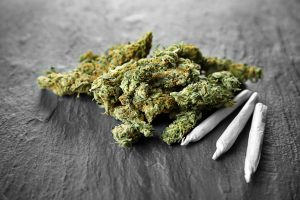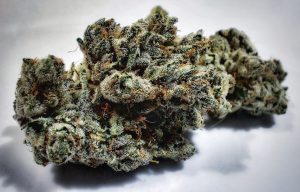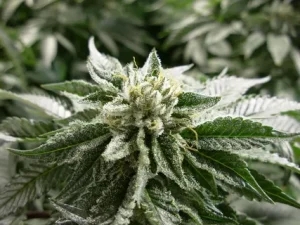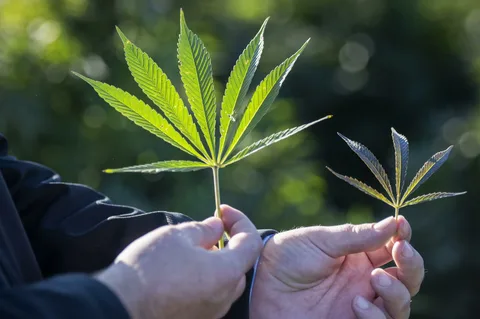Uncategorized
The Hazy Terrain: Understanding the Complexities of cannabis or hemp Classification
What is a hemp plant?
Cannabis with a THC level of 0.3 percent or less by dry weight is referred to as “hemp.”
What makes 0.3 percent? In 1979, a book titled “The Species Problem in Cannabis: Science & Semantics” made the initial proposal for this definition.
Author Ernest Small discusses in the book how it’s challenging to differentiate between hemp and cannabis because there isn’t a true taxonomy distinction between the two.
The 0.3 percent guideline was put out by Small as a potential fix, but he admitted that the percentage is arbitrary.
This figure was utilized to define hemp legally, as stated in the Agricultural Act of 2018 and other US statutes.
You won’t likely get high with hemp because of its extremely low THC content.
What is a marijuana plant?

Most of the time, when someone refers to “marijuana,” they mean psychoactive cannabis. The word is used synonymously with “weed” as well as several other words.
Legally speaking, cannabis with more than 0.3 percent THC by dry weight is referred classified as “marijuana.” Cannabis plants can have different amounts of THC. Certain cultivars are engineered to have more THC than others.
There are three types of cannabis plants: hybrids, sativas, and indicas. Science has not yet been able to confirm the claimed effects and characteristics of each of them.
Unraveling the Racist Origins: Understanding the Controversy Surrounding Cannabis or Hemp
Due to its racist origins, the term “marijuana” is highly contentious.
The Mexican Revolution caused a large number of Mexicans to immigrate to the United States in the early 20th century. Racial and anti-immigrant hostility increased as a result in the US. Cannabis was a permissible import at the time.
Before then, the term “marijuana” had not been used very much. Rather, the scientific name was “cannabis,” which is far more widely used. But in the 1910s and 1920s, Mexicans—who were characterized as regular cannabis users—became linked with the name “marijuana.”
To strengthen the link between cannabis and immigrants from Mexico, the U.S. government employed the name “marijuana” in propaganda against cannabis. In addition to spreading many falsehoods about cannabis, this anti-cannabis campaign also helped to reinforce racist stereotypes.
This misinformation continued until the 1930s and had a major role in making cannabis illegal.
There is still a lot of disagreement over what constitutes “marijuana.”
Many in the business no longer use the term “marijuana,” preferring to just use the word “cannabis,” because it is associated with racist and anti-cannabis propaganda.
Given that hemp is a member of the Cannabis species, this can be perplexing.
Applications
Although cannabis seeds are virtually devoid of cannabinoids, cannabis flowers, leaves, and stalks have larger quantities of these compounds.
Cannabis flower, which may be smoked or processed into tinctures and edibles, is a popular choice for people seeking to experience the health benefits of cannabis.
THC-rich cannabis strains can be used medicinally, such as for pain relief, yet they can also give users a high. While they won’t get you high, strains high in other cannabinoids, such as cannabidiol (CBD), but low in THC, may nevertheless have positive effects.
Other items that can be made from hemp, or cannabis with less than 0.3 percent THC, include:
Paper goods, apparel, textiles, feed for animals, plastic food items, including hemp milk, oil, seed, and protein powder
Growing hemp is thought to be a more sustainable method of producing goods like paper and textiles because it grows more quickly than other crops and forests.
Because hemp seed contains a complete protein and has a high fiber content, it is highly nutritious.
Marijuana strains versus hemp strains

Sativa and Indica are the two main subspecies of the flowering plant species known as cannabis.15 Native to tropical regions, cannabis sativa varieties16 usually reach tall heights. Sativa strains including Thai Stick, Panama Red, and Maui Wowie are among the preferred cannabis varieties among Baby Boomers.
The Hindu Kush, a mountain range that divides the Indian subcontinent from the rest of Asia, is the source of cannabis indica strains. Indica strains are bushy and squat, but sativa strains are tall. After California approved medical marijuana in 1996, indica strains became more and more popular in the United States. “Kush” strains are indica19 or hybrids with a predominance of India.
To create hybrids, breeders have crossed-bred these many cannabis cultivars over the years.20 Breeders of cannabis utilized this similar technique to produce hemp strains that resembled marijuana but had THC levels low enough to be allowed.
THC AMOUNT
The only thing that separates marijuana plants from hemp plants is the presence of THC, which is present in marijuana plants in amounts of more than 0.3 percent, as we have already discussed in this article.
Marijuana plants inherently have less CBD than hemp plants since they contain a lot more THC. Imagine that THC and CBD are like two sides of a see-saw; when one rises, the other falls.
Don’t be duped by it, though. THC levels in full-spectrum CBD products, including hemp-derived CBD oil, are trace amounts that fall below 0.3 percent.23 This may be sufficient to make someone fail a drug test if used frequently.24 If you have any questions about whether you might be subject to a drug test while using CBD, be sure to speak with your HR department. This even applies to people taking broad-spectrum CBD, which has undergone laboratory THC removal.
RELATIVE TO WELLNESS
In the US, CBD products have only been permitted since 2014.25 Parents requesting hemp oil for their ailing children led to their legalization. At that point, companies started selling goods bearing the labels “CBD oil” or “hemp oil.”
In contrast to hemp, marijuana is frequently used recreationally to become “high.” Additionally, marijuana has a wide range of medical uses. An overdose of hemp or marijuana is not known to be possible. Marijuana is now allowed in at least 35 states for a wide range of medicinal illnesses.
END OF HEMP VS MARIJUANA

Hemp and marijuana differ from one another, though not as much as they used to. The distinction is becoming less clear these days as CBD hemp products are accepted as a legal substitute for marijuana. The cannabis plant is the source of both hemp-derived CBD goods and marijuana products.27 The distinction is that CBD doesn’t make you feel euphoric.
Thousands of CBD enterprises have appeared virtually overnight after the US Department of Agriculture approved the creation of a domestic hemp growing program. There aren’t many laws in place to guarantee that consumers are purchasing safe CBD products because the market is still so young.
The USDA-certified organic seal, which indicates that Cornbread Hemp’s CBD oils are free of dangerous chemicals, pesticides, and other impurities, is applied to them. Our Kentucky growers use organic cultivation practices, and we use non-GMO, organic cannabis seeds. We make all of our products in small quantities and subject them to independent laboratory testing to ensure maximum potency and safety.
We now know that a large number of people prefer the cannabis experience to getting “high” off of marijuana. That’s the new meaning of hemp, driven by our USDA organic CBD products and Cornbread Hemp.


